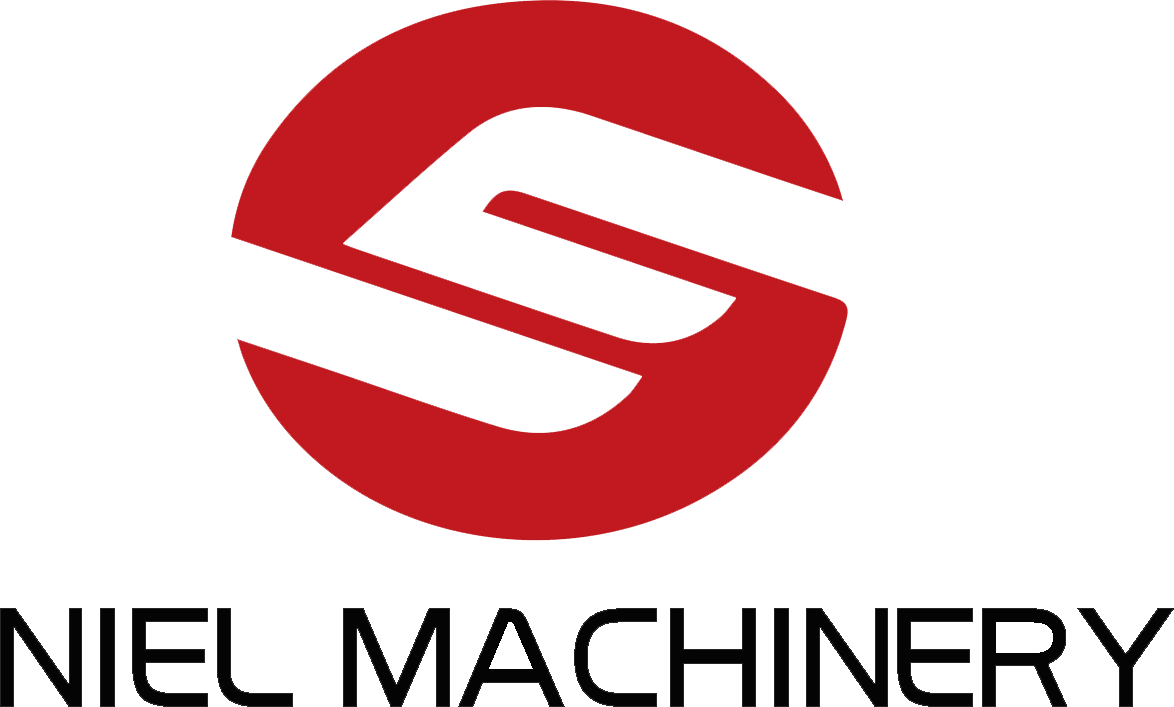The Evolution of Mixing Machinery: Horizontal Paddle Mixers at the Forefront
Release time:
2025-06-01 09:20
Source:
The Evolution of Mixing Machinery: Horizontal Paddle Mixers at the Forefront
Table of Contents
- 1. Introduction to Mixing Machinery
- 2. A Brief History of Mixing Machinery
- 3. Technological Advancements in Mixing Machinery
- 4. Understanding Horizontal Paddle Mixers
- 5. Applications of Horizontal Paddle Mixers
- 6. Advantages of Horizontal Paddle Mixers
- 7. The Future of Mixing Machinery
- 8. Frequently Asked Questions (FAQs)
- 9. Conclusion
1. Introduction to Mixing Machinery
Mixing machinery has become an indispensable component across various industries, from food processing to pharmaceuticals. The efficiency and effectiveness of mixing processes are pivotal for product quality, consistency, and overall operational success. As technology advances, the evolution of mixing machinery continues to reshape manufacturing practices, significantly impacting productivity and innovation. Among the most significant developments in this domain are **horizontal paddle mixers**, which lead the charge in modern mixing solutions.
2. A Brief History of Mixing Machinery
The origins of mixing machinery can be traced back to ancient civilizations that utilized rudimentary tools for mixing ingredients. However, the industrial revolution marked a critical turning point, as mechanization began to take hold. Early mixing machines were primarily designed for specific applications, such as construction and food production, and were often limited in scope and efficiency.
With time, advancements in materials and engineering led to the development of more sophisticated mixing solutions. The introduction of electrical and digital technologies has further revolutionized the industry, enabling precise control and automation in mixing processes. The rise of horizontal paddle mixers in the late 20th century exemplifies this evolution, as they combine efficiency with versatility.
3. Technological Advancements in Mixing Machinery
Technological innovations have significantly influenced the design and functionality of mixing machinery. Modern mixing solutions now incorporate features that enhance performance and usability. Key advancements include:
- **Automated Controls**: Integration of programmable logic controllers (PLCs) allows for precise mixing times, speeds, and temperatures, improving consistency and reducing labor costs.
- **Smart Sensors**: Sensors monitor viscosity and density in real-time, ensuring optimal mixing conditions and enabling immediate adjustments.
- **Energy Efficiency**: New designs focus on energy conservation, utilizing advanced motors and drive systems to reduce power consumption while maintaining effective mixing capabilities.
These technological advancements not only enhance the performance of mixing machinery but also contribute to sustainability initiatives across industries.
4. Understanding Horizontal Paddle Mixers
Horizontal paddle mixers are specifically designed to combine bulk materials efficiently. They utilize a horizontal drum or trough and feature specially crafted paddles that facilitate the blending process. The design allows for high-quality mixing with minimal energy consumption, making them an ideal choice for many applications.
The paddles are strategically positioned to create a highly effective mixing action, ensuring that materials are moved in a manner that promotes uniformity. This design is particularly advantageous for mixing powders, granules, and even liquids, making horizontal paddle mixers versatile tools in the manufacturing sector.
4.1 Design Features
The design of horizontal paddle mixers includes several essential features that contribute to their effectiveness:
- **Robust Construction**: Typically made from high-quality stainless steel or other durable materials, these mixers are built to withstand the rigors of industrial use.
- **Customizable Paddle Configurations**: Manufacturers can tailor paddle shapes and arrangements to suit specific mixing requirements, optimizing performance for various materials.
- **Efficient Discharge Systems**: Many models come equipped with quick-release discharge gates that facilitate rapid unloading, minimizing downtime in production.
5. Applications of Horizontal Paddle Mixers
Horizontal paddle mixers find application across a myriad of industries due to their adaptability and efficiency. Key sectors include:
- **Food and Beverage**: Used for blending dry ingredients, sauces, and marinades, ensuring even distribution and consistent flavor profiles.
- **Pharmaceuticals**: Essential for mixing powders for tablets and capsules, horizontal paddle mixers maintain high standards of hygiene and accuracy.
- **Chemical Processing**: Used for combining various chemicals and formulations, they help achieve uniformity in production batches.
- **Construction**: Effective in mixing cement, aggregates, and other building materials, enhancing the quality of construction mixes.
Each of these applications highlights the critical role horizontal paddle mixers play in enhancing production quality and efficiency.
6. Advantages of Horizontal Paddle Mixers
The benefits of horizontal paddle mixers extend beyond their basic functionality. Here are several advantages that make them a preferred choice in many industries:
- **High Efficiency**: Their design allows for rapid and thorough mixing, reducing processing times and increasing output.
- **Versatility**: Capable of handling a wide range of materials, horizontal paddle mixers are adaptable to different production needs.
- **Consistency**: These mixers ensure uniformity in product quality, which is vital for industries where precision is key.
- **Ease of Maintenance**: Many horizontal paddle mixers are designed for easy cleaning and maintenance, improving operational uptime.
These advantages underscore why horizontal paddle mixers have become a staple in modern manufacturing processes.
7. The Future of Mixing Machinery
As industries continue to evolve, the future of mixing machinery, particularly horizontal paddle mixers, looks promising. The ongoing integration of artificial intelligence (AI) and machine learning will likely play a significant role in optimizing mixing processes. Predictive analytics may allow manufacturers to anticipate maintenance needs and adjust processes in real-time, thereby minimizing downtime and maximizing efficiency.
Additionally, as sustainability becomes a focal point in manufacturing, the focus on energy-efficient mixing solutions will drive innovation. Future designs may incorporate more environmentally friendly materials and components, aligning with the global push towards sustainability in industrial practices.
8. Frequently Asked Questions (FAQs)
8.1 What is a horizontal paddle mixer?
A horizontal paddle mixer is a type of mixing machinery that utilizes a horizontal drum and specially designed paddles to blend materials efficiently. It is widely used across various industries for mixing powders, granules, and liquids.
8.2 What are the main advantages of using horizontal paddle mixers?
The main advantages include high efficiency, versatility, consistent mixing quality, and ease of maintenance. These features make them ideal for diverse applications.
8.3 How do horizontal paddle mixers compare to other types of mixers?
Horizontal paddle mixers are particularly effective for bulk materials, providing uniform mixing and shorter processing times compared to other types of mixers, such as vertical mixers or continuous mixers.
8.4 What industries benefit most from horizontal paddle mixers?
Industries such as food and beverage, pharmaceuticals, chemical processing, and construction frequently utilize horizontal paddle mixers due to their adaptability and efficiency.
8.5 What should manufacturers consider when choosing a horizontal paddle mixer?
Manufacturers should consider factors such as material compatibility, capacity requirements, desired mixing speed, and maintenance needs when selecting a horizontal paddle mixer to ensure optimal performance.
9. Conclusion
The evolution of mixing machinery, particularly horizontal paddle mixers, signifies a remarkable advancement in manufacturing technology. Their efficiency, versatility, and ease of use have established them as essential tools across various industries. As we look toward the future, the integration of advanced technologies and a focus on sustainability will undoubtedly shape the next generation of mixing solutions. Embracing these innovations will empower businesses to enhance productivity and maintain high-quality standards in an increasingly competitive market.
Related News
Boosting Efficiency: Semi Automatic Powder Filling Machine in Action
Boosting Efficiency: Semi Automatic Powder Filling Machine in Action Table of Contents 1. Introduction to Semi Automatic Powder Filling Machines 2. What is a Semi Automatic Powder Filling Machine? 3. How Does a Semi Automatic Powder Filling Machine Work? 4. Benefits of Semi Automatic Powder Filling Machines 5. Applications of Semi Automatic Powder Filling Machines 6. Maint
Understanding Semi-Automatic Powder Filling Machines: A Comprehensive Overview
Semi-automatic powder filling machines are pivotal in the packaging sector, particularly for businesses handling powdered products such as spices, flour, chemicals, and pharmaceuticals. These machines bridge the gap between manual filling methods and fully automatic systems, offering businesses an optimal solution for efficiency and precision. One of the primary advantages of semi-automatic powder
The Evolution of Mixing Machinery: Horizontal Paddle Mixers at the Forefront
The Evolution of Mixing Machinery: Horizontal Paddle Mixers at the Forefront Table of Contents 1. Introduction to Mixing Machinery 2. A Brief History of Mixing Machinery 3. Technological Advancements in Mixing Machinery 4. Understanding Horizontal Paddle Mixers 5. Applications of Horizontal Paddle Mixers 6. Advantages of Horizontal Paddle Mixers 7. The Future of Mixing Machinery 8
The Essential Guide to Horizontal Paddle Mixers: Applications and Benefits
Horizontal paddle mixers are vital components in various manufacturing and processing operations, particularly within the realm of mixing machinery. Understanding the workings and benefits of these mixers can significantly enhance operational efficiency and product quality. A horizontal paddle mixer typically features a cylindrical mixing chamber equipped with paddles that rotate on a horizontal a
Exploring the Dynamic Capabilities of Industrial Ribbon Mixers Table of Contents Introduction to Industrial Ribbon Mixers Understanding the Mechanics of Ribbon Mixers Advantages of Using Ribbon Mixers in Manufacturing Applications of Ribbon Mixers Across Industries Maintaining Your Ribbon Mixer for Longevity Future Trends in Ribbon Mixer Technology Case Studies: Ribbon Mixers in Act
Understanding Industrial Ribbon Mixers: Essential Tools for Effective Material Blending
Industrial ribbon mixers are vital pieces of equipment used in various manufacturing processes, particularly in the blending of powdered and granular materials. These mixers are characterized by their unique design, featuring a set of helical ribbons that move materials through the mixing chamber, ensuring a thorough and uniform blend. With increasing demands for consistency and quality in product




















